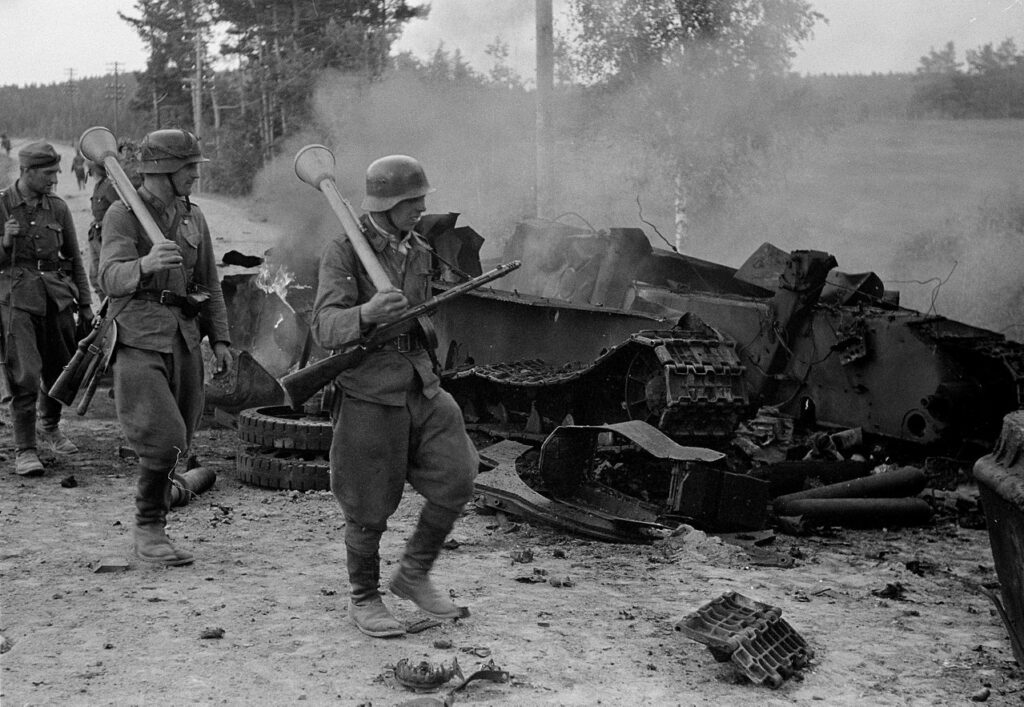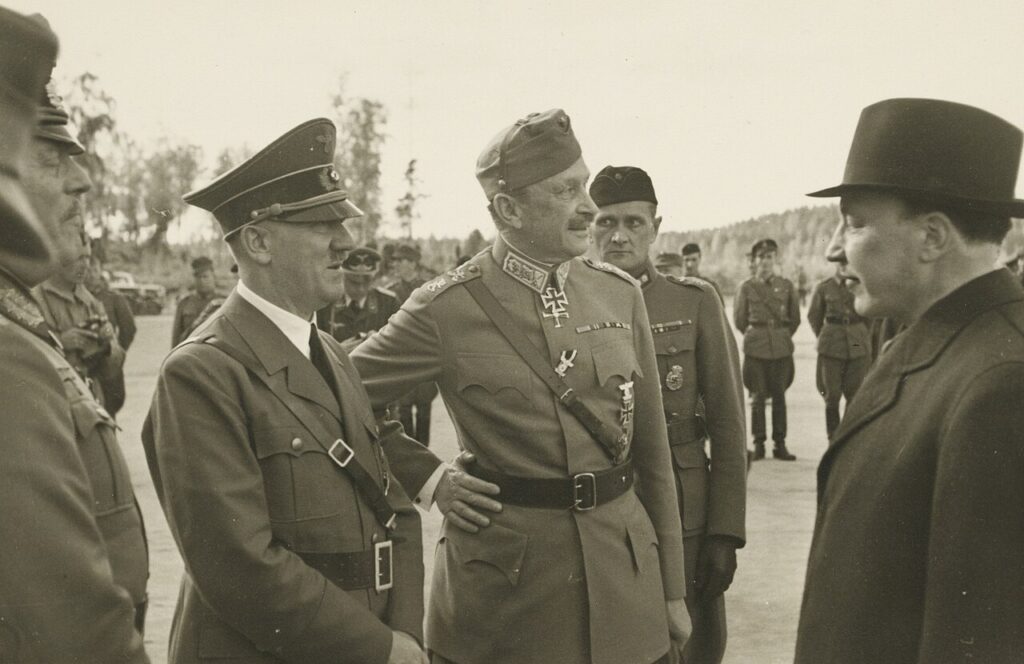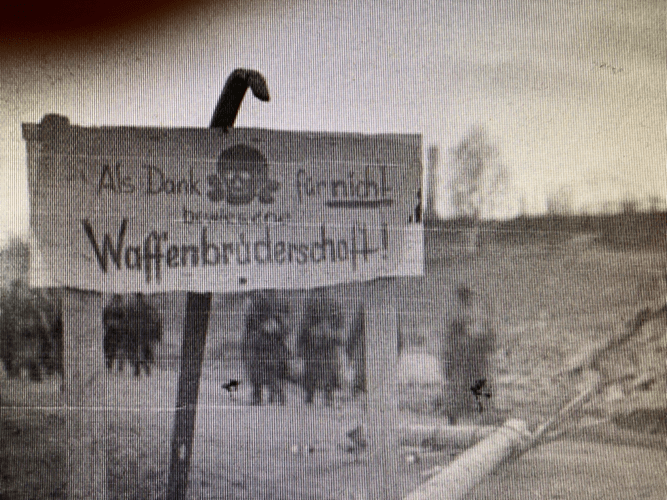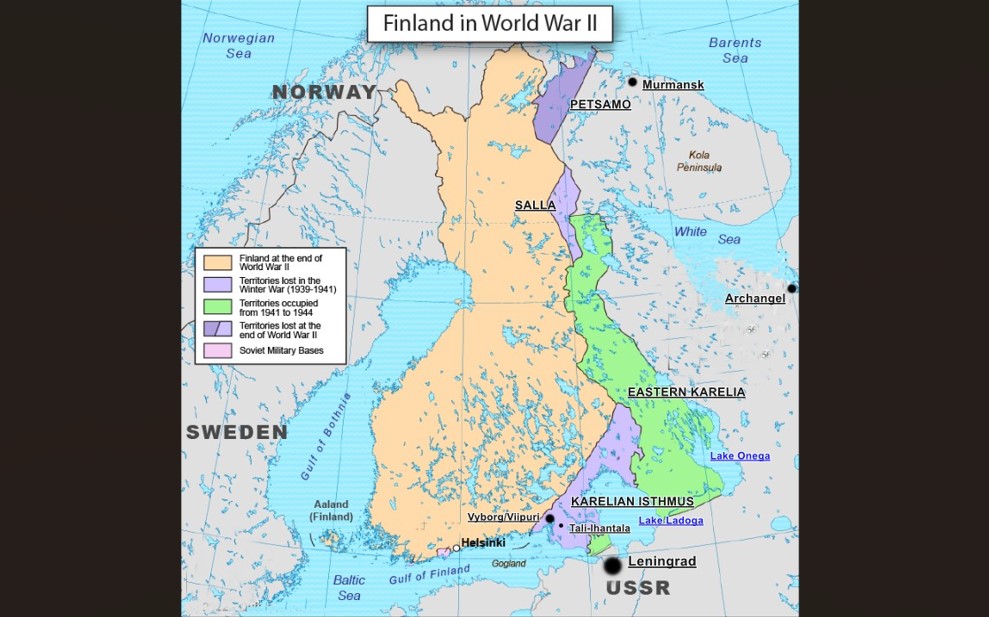The latest in a series of occasional articles by Andy Ford on 80-year-anniversaries of the Soviet Union in WW2.
*******
In September 1944 Finland agreed an armistice with the USSR. Hence, Nazi Germany was left without a single ally.
Finland had first entered the war in November 1939, when attacked by the Soviet Union in the ‘Winter War’. Such was the disorganisation of the Red Army caused by Stalin’s insane purges, tiny Finland (population 3.7 million) fought the mighty Soviet Union (population 170 million) to a standstill. Trotsky wrote:
“All the contradictions and defects of the régime always find a concentrated expression in the army. The enmity between the labouring masses and the bureaucracy corrodes the army from within. Personal independence, free investigation and free criticism are no less necessary for the army than for the economy. Meanwhile the Red Army officers are put under the control of political police in the form of careerist commissars. Independent and talented commanders are being exterminated; the others are destined to constant fear. In such an artificial organism as the army where preciseness of rights and duties is inevitable, nobody in reality knows what is permissible and what is taboo. The thieves and chiselers operate behind a patriotic front of denunciations. Honest people become disheartened. Alcoholism spreads more and more widely. Chaos reigns in the military supplies.
“Parades celebrated on Red Square are one thing, the war is quite another. The planned “military stroll” into Finland converted itself into a merciless accounting of all aspects of the totalitarian régime. It uncovered the bankruptcy of the leadership and the inadequacy of the high commanding staff appointed because of its servility rather than for its talent and knowledge. Besides, the war uncovered an extreme lack of proportion in the different branches of Soviet economy, in particular the poor state of transportation and various kinds of military supplies, especially of provisions and clothing. The Kremlin constructed, not without success, tanks and planes but neglected sanitation, gloves and boots. The living man who stands behind all machines was completely forgotten by the bureaucracy.”
(Trotsky ‘The Second World War’, Jan-March 1940)
Red Army’s dismal performance
The Red Army’s dismal performance was a big factor in Hitler’s decision to launch the invasion of the USSR in June 1941. At that point Finland was aligned with Britain and France, and Britain even considered declaring war on the USSR but was dissuaded by the French government. Both powers made plans to bomb the Murmansk railway, as analysed by Trotsky in ‘Balance Sheet of the Finnish Events’(1940).
The Winter War was concluded by Finland ceding some border territories to the Soviets – including the country’s second city, Viipuri/Vyborg, and the mineral-rich area of Petsamo – but they were waiting their moment to take them back. That moment came in June 1941 when Finland joined the Nazi attack on the USSR.
The whole saga shows what a myth the ‘war for democracy’ is as a description of WW2. The ‘democracy’ of Finland was part of the Nazi alliance, while the Stalinist dictatorship was one of the Allied powers. The British and French missions were still in Finland at the point of the attack on Russia.
But the Finns were only interested in retrieving their lost territories and once that was achieved, they did not press the attack. This was part of the reason for the survival of Leningrad under the brutal starvation of the Nazi siege – the Finns refused to advance down the Karelian isthmus to the city itself and stopped 20 miles from the centre of Leningrad.
Soviet invasion of Finland stopped at Tali-Ihantala
As the tide of war in the east turned, Finland found the Red Army coming right back to their borders. The Soviets launched a major attack on the country in summer 1944, intending to conquer Finland and use its ports to menace German shipping in the Baltic, especially the transport of Swedish iron ore.
But again, the Finns put up a tenacious defence. They also appealed to Germany for assistance, and were given heavy artillery and a Luftwaffe squadron, in return for a solemn pledge from Risto Ryti, President of Finland, not to make a separate peace with the Soviets.

With the help of the Germans, the Red Army was stopped and defeated in the Battle of Tali-Ihantala (named after two Finnish villages in the Karelian isthmus). The Russians lost 20,000 dead and injured in the battle, compared to Finnish losses of 8,000. The Russians would not conquer Finland without severe loss of men, equipment and time.
Stalin must have looked at the readiness of the Finns to defend their homeland, the natural defences of the terrain, with innumerable lakes, swamps and forests, and considered it more important to concentrate on entering Germany itself and reach Berlin before Britain and the USA. He offered Finland a peace deal rather than capitulation.
Negotiations lead to armistice
There had been intermittent ceasefire contacts between since 1943, but now negotiations began in earnest. Finland escaped from its commitment to Germany to never conclude a separate peace with the USSR by the devious expedient of the resignation of the President, Risto Ryti, who had signed the agreement with the Nazis, and then claiming that the Ryti-Ribbentrop agreement was just a personal guarantee by him, not a commitment from the Finnish government. The Finnish parliament passed the leadership to Marshal Mannerheim, the commander-in-chief of the Finnish army.
Hitler, with no apparent irony, expressed shock and surprise at their bad faith. He had every reason to trust Mannerheim, given his past role as the leader of the White Guards who had drowned the 1918 Finnish revolution in blood. Mannerheim, at the head of the counter revolution, led the forces of the landowners and capitalists, and with German assistance had smashed the Finnish Socialist Workers Republic based on Helsinki and Viipuri. Thousands of Finnish Bolsheviks perished in Mannerheim’s prisons.

on the right, Risto Ryti (1889-1956)
But this seemed to be of no matter to the Stalinists. When negotiations commenced, the British journalist Alexander Werth noted the polite conferences between arch-Stalinist Zdhanov, the leader of the defence of Leningrad, and the “fascist beast” Mannerheim, “the object of so many vicious Russian cartoons”.
The result of the negotiation was the Moscow Armistice of September 19th 1944, which ceded the nickel-rich northern area of Petsamo, and much of the Karelian isthmus to the USSR; agreed that Finland pay war reparations; and committed Finland to expel the 200,000 German troops deployed in the north of the country.
Finland was also required to ban all fascist organisations, and to legalise the Communist Party; and to put the politicians most closely associated with the German alliance on trial. Seven of them, including Risto Ryti, served time in jail. After the armistice Mannerheim wrote to Hitler in fawning terms, stating, “I cannot and I will not turn the weapons, turn the arms which you have so liberally supplied, against Germans”. Events were to turn out otherwise.
The Lapland War
At first the Germans began their evacuation peacefully, but a failed German attempt to capture various coastal islands and other armed clashes, gradually unravelled the uneasy peace between the two former allies. There were over 200,000 soldiers in the German 20th Mountain Army which held the lines in northern Finland and Lapland and the Russians finally began to insist that the Finns do more to drive them out.

In late September the ‘Lapland War’ erupted between German and Finnish forces. As they retreated, the Germans engaged in scorched earth tactics, destroying public buildings and towns across Lapland, in addition to 470 km of railway and 4,000 km of telegraph lines. They were mainly gone by November 1944, although some Finnish territory was occupied until January 1945.
Finally in October, the Red Army attacked in the extreme north and drove the Germans out of Petsamo, advancing into Norway as far as the port of Kirkenes in the far north of the country.
After effects of Finland’s separate peace
The Baltic was now available to the Red Army for submarine warfare, disrupting the German evacuation of Lithuania and East Prussia, and threatening the delivery of iron ore from Sweden. The nickel of Petsamo was a vital component of advanced aircraft engines, and its loss stymied development of the Messerschmitt 262, the world’s first jet fighter.
Finland itself was set for its role in the post-war period as a capitalist democracy observing strict neutrality in the Cold War, censoring anti-Soviet news and films, and allowing free operation of the Communist party.



